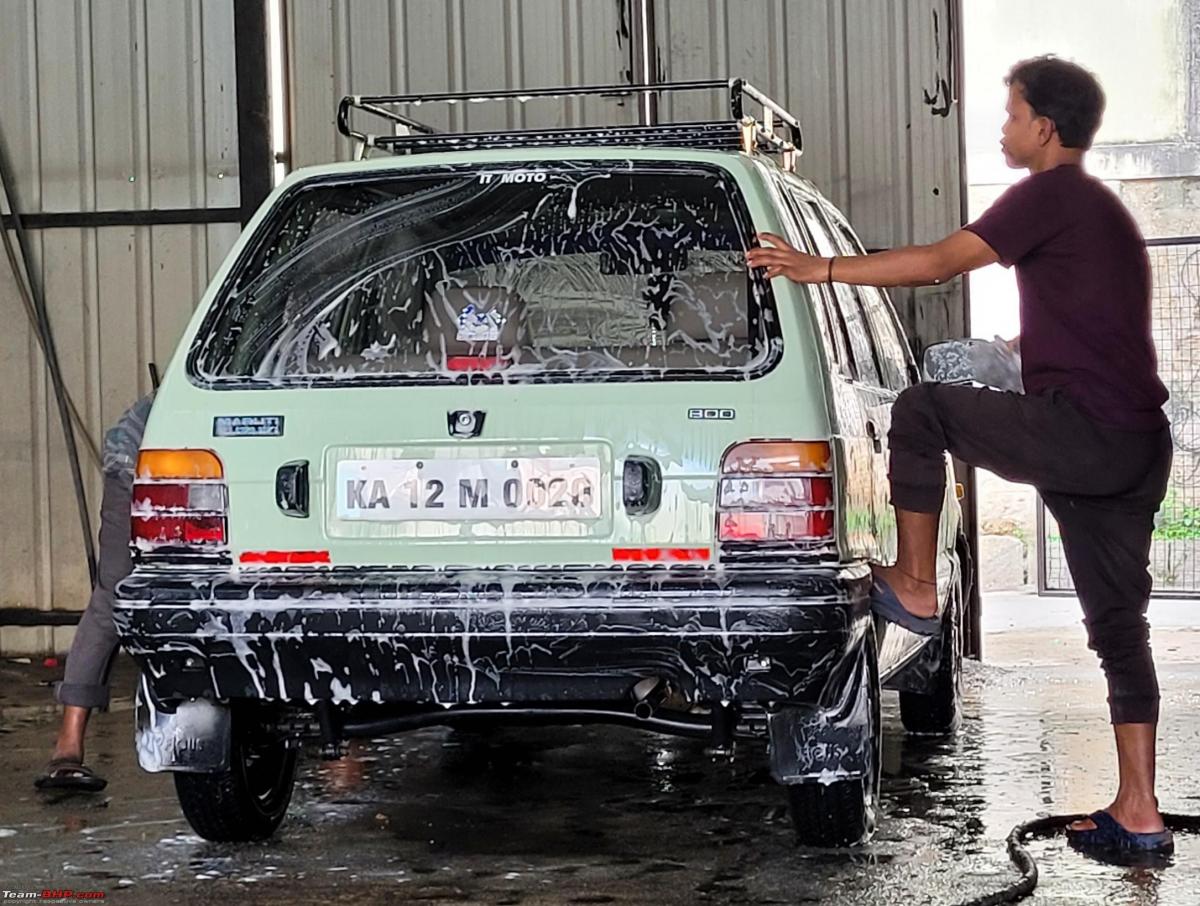The F8D is an ultra-reliable motor. It can be driven fast, it can climb steep inclines, it’s fuel efficient & it’s reliable and cheap to maintain.
BHPian Samba recently shared this with other enthusiasts.
I still remember the days when the AC button acted as a turbo! On single-lane roads for doing a quick overtake, I used to downshift and turn off the AC and the car used to get that much-needed extra boost!
But then I always say, if you can’t buy a 4WD SUV, buy an Alto/M800! These cars can literally take you anywhere! The F8D is an ultra-reliable motor. It can be driven fast, it can climb steep inclines, it’s fuel efficient & it’s reliable and cheap to maintain.
I had my own share of fun with this engine too. It never let me down. Be it on the Nilgiris in my Alto or be it on the mighty Himalayas in the Alto/M800/Omni cabs.
But as we say, all good things come to an end. This too had to happen one day.
The first car whose RC book had my name on it.
All my basic experiments and DIYs on cars started from here.
Here’s what BHPian Carma2017 had to say about the matter:
The F8D engine will be retired because similar to the diesel, the efforts and investment required to upgrade this engine to the BS6, 2nd stage norms, is very high. Suzuki’s efforts are deemed to be better invested in new series of IC engines or hybrids / EVs.
In any case, in the near to the long-term future, I don’t think Suzuki has any intention to look beyond fuel efficiency as far as engines are concerned. Power and driveability will always be a distant second at least till EVs arrive.
I saw a few sarcastic posts on the K15C engine. I agree it deserves all the brickbats it’s getting from enthusiasts. Only time will tell if Suzuki’s punt on Fuel Efficiency figures will pay off. We will need a few months to be sure.
Here’s what BHPian electro-monk had to say about the matter:
To exaggerate a little, the Indian automobile industry got spurred by F8B/F8D similar to how the steam engine spurred the industrial revolution in Europe.
In my hometown, we have a carburetted M800 going to complete 25 years this week. Engine is a joy and VERY tractable at least upto 60 – never drove it beyond that because of brakes and bouncy suspension.
It has needed nothing more than regular services.
Here’s what BHPian saleem_k had to say about the matter:
My family’s first car was Alto 2007 model. I wasn’t aware of cars much at around that time and budget was the only reason for purchasing this car. Today we have an Ecosport 1.5D as well as an Endeavour 3.2 but the Alto is still in service after renewing the RC after 15 years. The only reason is that it’s not used much now and my parents don’t really use the car much except for some tasks around the city and because the engine has been reliable with no failures.
I learnt to drive on this car and took it for many runs around within the erstwhile combined state of AP. Surprisingly the engine used to feel normal even at 100-110kmph and without much strain. Of course, on ghat sections, we used to switch off the AC as the car would lose whatever little power it had.
We love this car primarily because of the sentiment attached to the first car but also the engine that never let us down on our many trips, sometimes to some unknown places. Farwell to this wonderful engine. It has done its job and how!
Here’s what BHPian GreenDay had to say about the matter:
This brings back all the sweet memories as a child. From being the first/primary car in the family to learning how to drive one.
I recently picked up M800 (1989), thanks to my friend and fellow BHPian @funkykar. This mostly serves as a secondary car at the moment, which is anytime the best bet to commute in a city like Bengaluru, also for my sister to practice her driving.
Last week’s picture of Pista getting a wash. Though the initial plan was to keep the car for a short time, with this news, I wish to keep this M800 for a long time.
Check out BHPian comments for more insights and information.
Source: Read Full Article

